Get Your Dream Back with This Killer Kettlebell Back Workout - No Gym Required!
Everyone loves a good chest or abs workout. After all, these are the muscles you can see in the mirror. However, the muscles on the back and upper body are arguably more important. After all, these are the muscles that hold you up against the pull of gravity.
Focusing too much on the front of your body and neglecting your back can cause all sorts of problems, from poor posture to muscle imbalances that increase your risk of injury. Also, if you don’t want to look good from the front and lousy from behind, back training is a must.
Pull-ups, chin-ups, and T-Bar rows are all popular back exercises that can help build the back of your dreams, but did you know you can also use kettlebell training to achieve it as well?
Key Takeaway
The most important thing to remember here is to ensure proper form and control when exercising with kettlebells. This will help you increase your strength without risking injury. With careful adherence to proper technique and gradual weight increases, you can safely use kettlebell exercises as part of a comprehensive workout plan that targets all major muscle groups.
Why Should I Workout My Back?
Working out your back is essential for overall health and fitness, as it helps to keep the spine and core muscles strong and stable. A strong back will improve posture, help prevent injuries, reduce muscle aches and pains, and improve balance. Additionally, a stronger core and abdominal muscles can help protect internal organs from injury.
Working out your back can also help improve your athletic performance, as back strength and stability are essential for many movements in sports. Finally, exercising the various upper back muscles can help you look more fit and toned, as strong back muscles can create a symmetrical appearance. With all of these benefits, it's clear that regular back exercises and workouts should be included in any fitness plan.
Picking The Right Kettlebell
Determining the amount of weight for any exercise depends on the person and their fitness level and goals. Here are a few things to consider when determining which weight works best for you.
- Choose a weight that you can swing with good form.
- Make sure the weight you choose is sufficient for efficiently training the targeted muscles.
- Beginners should choose a weight in which you can perform 12-15 repetitions without breaking form.
- Intermediate lifters can increase the weight to where 12 reps become challenging.
- Advanced lifters should choose a weight that can be used for a max of 10 reps.
No matter, if you are a beginner or advanced KB lifter, maintaining the correct form, is the key to maximizing results as well as protecting other muscles in your body from injury.
Kettlebell Back Workouts
While there is nothing wrong with a steady variation of barbell, dumbbell, and machine back exercises, using other training methods or equipment such as kettlebells could be just what you need to keep your workouts productive, interesting, and efficient.
In this article, we will reveal 5 of the best kettlebell back exercises, such as the kettlebell halo and single arm deadlift that you can use to change up your workout routine and reap the benefits of building back and upper body muscle, core strength, and overall fitness.
Kettlebell Renegade Row
The kettlebell renegade row is not just a great back builder; they’re a superb full-body exercise! This advanced kettlebell move works your lats, mid-traps, rhomboids, and posterior deltoids and involves your legs and other core muscles too. Combine renegade rows with push-ups for a really time-efficient workout.
Technique
- Get into a push-up position with feet slightly wider than shoulder-width apart and hands aligned directly under your shoulders holding two kettlebells. Your whole body should be in a straight line. Keep your core tight.
- Perform a push-up and after you’ve completed a rep, drive your left elbow up while maintaining good form.
- Return the kettlebell back to the starting floor, and perform another push-up.
- Then, perform the row with your other arm.
- Return to starting position and repeat the sequence for the desired number of reps.
Reps and Sets
These will depend on your level of training and the weight you decide to use, but it is recommended to start this kettlebell back workout off light and aim for 10-12 reps until you get more comfortable.
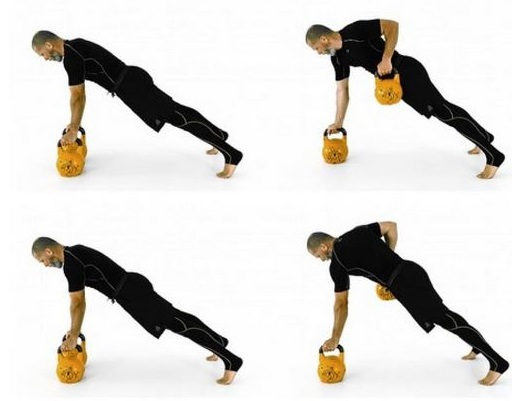
Elevated Plank Bent-over Row
While a kettlebell plank row and renegade row is undeniably a very effective kettlebell exercise, they’re not for everyone. For starters, you need two kettlebells, and you’ll also need excellent wrist strength to support your weight on one arm. This kettlebell back exercise is somewhat easier than the renegade row, plus it’s still a very effective movement.
Technique
- With a kettlebell in one hand, place your other hand on a knee to hip-high bench or step.
- Get into a push-up or plank position with one hand supporting your body weight and the other holding the kettlebell.
- Keeping your supporting arm straight, walk your feet back and into a plank position. Brace your abs and let the weight hang down from your shoulders, which should be pulled down and back.
- Without lifting or lowering your hips or twisting your body, bend your arm and row the kettlebell up and into your ribs.
- Extend your arm and repeat.
- Return to starting position and try to do the same number of reps on each side.
Reps and Sets
Perform 4-6 sets of 6-12 reps. If you are new to the exercise, start off with 3-5 sets of 5 reps until you have mastered the technique.
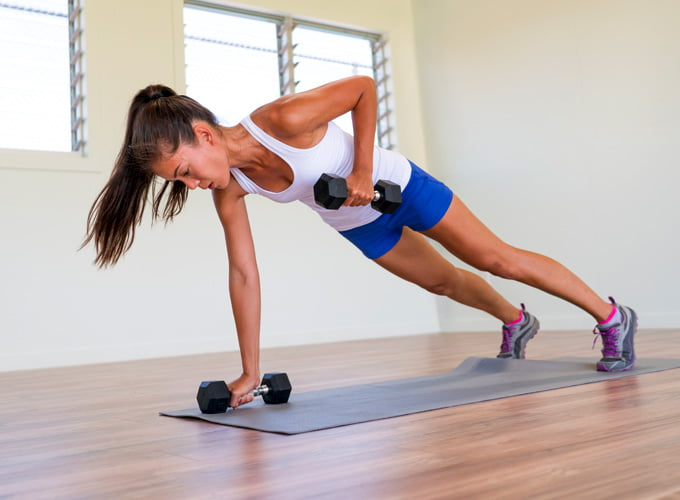
Kettlebell Wrestler's Row
The kettlebell wrestler's row is a powerful exercise that targets and adds some serious muscle to your lats and mid back. This exercise helps to develop strength, stability, improve posture and reduce any chronic pain or discomfort in the upper back region. It also helps to improve coordination and balance.
Technique
- Hold a kettlebell in each hand and stand with your feet about shoulder-width apart. Bend your knees slightly, brace your core, and pull your shoulders down and back.
- Lean forward from your hips until your body is inclined to about 45-degrees. Do not round your lower back. Pull both weights up and into your ribs. This is your starting position.
- Keeping one arm stationary, lower and then row the weight back up to your side.
- Repeat on the opposite side.
- Continue alternating arms for the duration of your set.
Reps and Sets
Perform this kettlebell back workout for 2-4 sets of 6-8 reps.
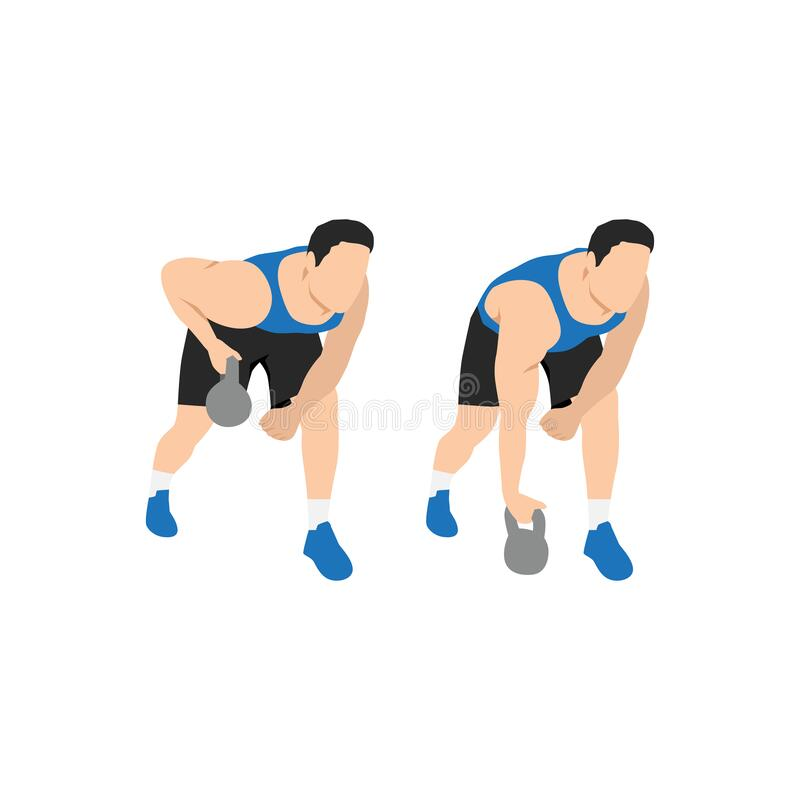
Kettlebell Swing
The Kettlebell Swing is a full-body exercise that can be used to build strength, power, and endurance, as well as burn fat and calories. It can be performed as a part of a regular workout routine or as an isolated exercise to target specific muscle groups.
Technique
- The kettlebell swing begins with a hip hinge, start in a standing position, keep your knees bent at the hips and allow your torso to lean forward slightly.
- Then grab a kettlebell with both hands, keeping it close to your body as you swing it back between your legs, and then explosively drive your arms up as you stand tall.
- As the kettlebell swings behind you, the glutes and hamstrings should be engaged.
- Finally, control the kettlebell swing as you bring it back in front of your body to complete the full range of motion.
Reps and Sets
A good place to start is performing kettlebell swings at 3–5 sets of 10–20 reps.
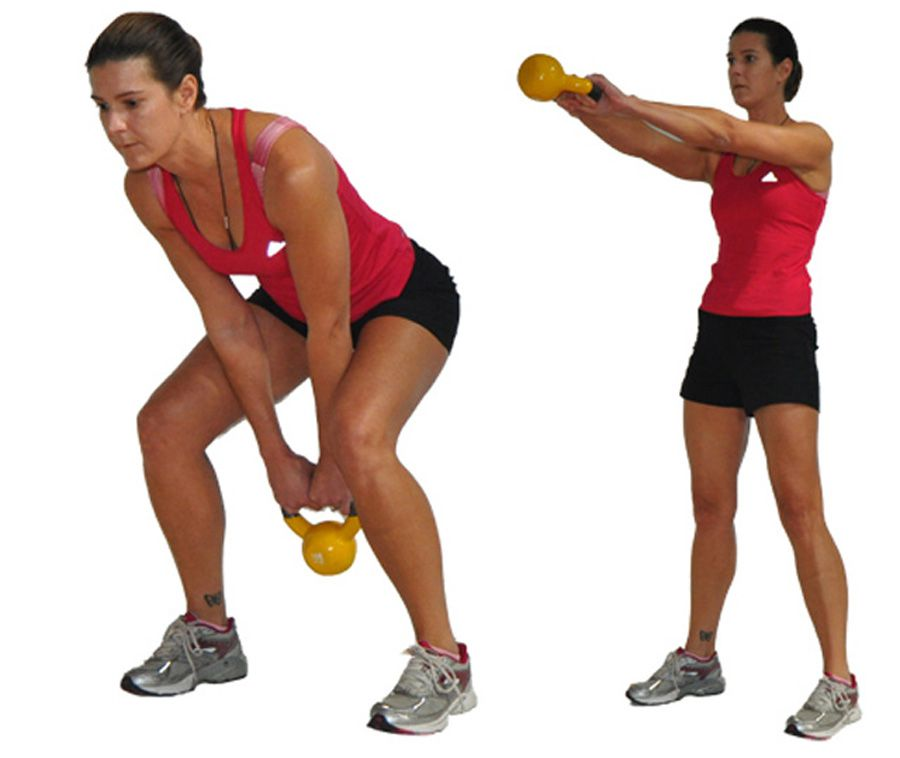
Two-handed Kettlebell High Pull
The two-handed kettlebell high pull is a versatile exercise that engages multiple muscle groups in the body, including the core, lats, shoulders, and biceps. It is an excellent movement for building strength and power, increasing endurance and coordination, core stability, and developing muscular balance.
Technique
- To perform the two-handed kettlebell pull, start with the feet shoulder-width apart and the kettlebell between your legs.
- Keeping the chest tall, hinge at the hips and pull the kettlebell upward to chest level with both hands.
- Engaging through the core, reverse the motion and slowly lower back down.
- This exercise should be done in a controlled manner for maximum benefit and to minimize injury risk.
- Beginners should perform the kettlebell high pull with caution, preferably under the supervision of a personal trainer.
Reps and Sets
Perform this kettlebell back workout for 3-5 sets with 10 reps each, resting for 60 seconds in between sets.
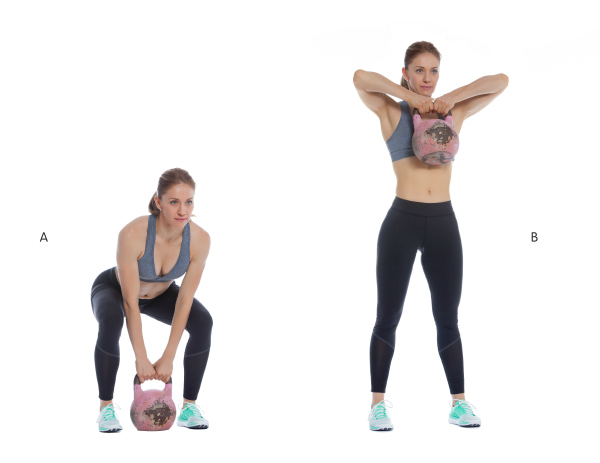
What Muscles Are Worked During Kettlebell Training?
There are many muscles in the back that are used for stabilization and assisting with pulling based movements, but the main back muscles targeted by a kettlebell exercise include:
Rhomboid Major and Minor- These muscles are located between your shoulder blades and below the trapezius muscles, and are highly responsible for the scapula retraction, elevation, and rotation.
Latissimus dorsi (Lats)- A very large back muscle responsible for the adduction, extension, and medial rotation of the humerus.
Trapezius (Traps)- The muscles that resemble mountains on each side of the neck when well developed. The trapezius muscles rotate, elevate, and adduct the scapula while extending the neck.
Erector Spinae- These muscles extend along the vertebreal column and are responsible for keeping the spine erect and stablized.
Can I Workout Using Kettlebells Everyday?
While it is possible to workout with kettlebells every day, it is generally not recommended. Overuse of any one muscle group can lead to injury and soreness. Incorporating other forms of exercise, such as stretching, weightlifting, cardio, and yoga can help create a balanced routine that will reduce the risk for injury and keep the entire body feeling strong.
When Should I Increase Weight for Kettlebell Exercises?
When increasing weight with kettlebell exercises, it is important to do so gradually and in small increments. Doing too much too quickly can lead to injury or improper form, which can worsen existing muscle imbalances or cause new ones. It is best to start with a light weight, close to your bodyweight and work your way up as you get stronger. It is also important to ensure that you can maintain correct form when doing the exercises with heavier weights. Gradually increasing the weight of kettlebells is the safest and most effective way to maximize results and protect against injury.
Pulling Workouts Vs Pushing Workouts
Pulling workouts with kettlebells target the back muscles, such as the latissimus dorsi, rhomboid major and minor, trapezius and erector spinae. This type of exercise helps to increase strength, stability, improve posture and reduce any chronic pain or discomfort in the back. Pulling exercises also help to improve athletic performance as they target the muscles used while throwing, running and jumping.
Pushing workouts with kettlebells are great for strengthening the chest, shoulders and triceps. Pushing exercises also help to increase balance and stability, as well as reduce any chronic pain or discomfort in the upper arms and shoulders. Push exercises are essential for maintaining strong shoulders, helping to reduce the risk of shoulder injury due to overuse or trauma.
Overall, both pulling and pushing exercises are essential for a successful workout regimen. Alternating between both types of exercises will help you achieve your desired results while reducing the risk of injury and keeping your body in balance.
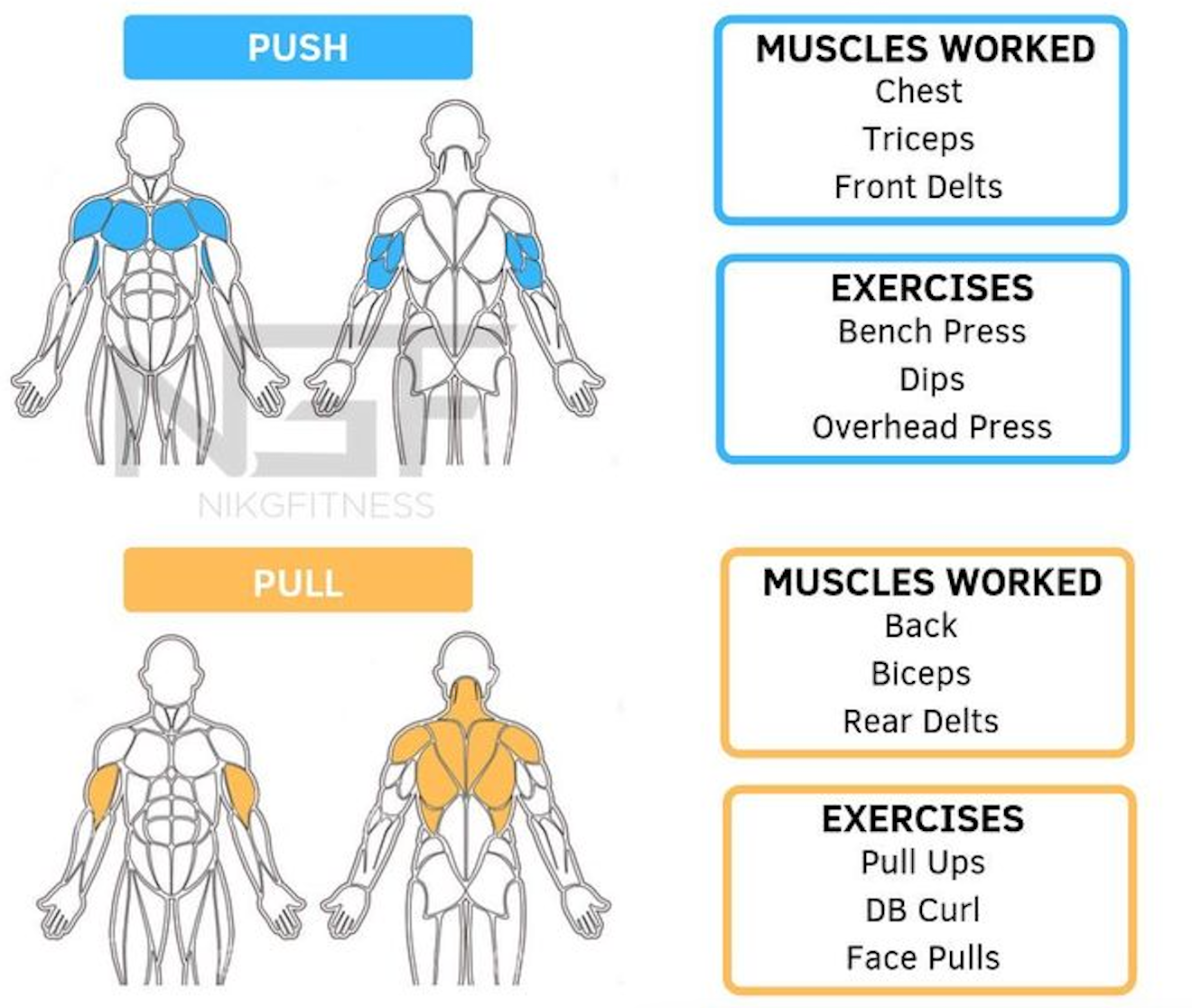
Conclusion
Kettlebell exercises are an excellent way to target all the major muscle groups in your body. By working out both the pushing and pulling muscles, you can achieve a balanced kettlebell workout and routine that will help improve strength, stability, posture, balance, and athletic performance. It is important to remember to gradually increase weight as you get stronger so as not to put too much strain on any one particular group of muscles. With regular kettlebell workouts and proper form, you'll be well on your way to achieving optimal health and fitness goals!
References
